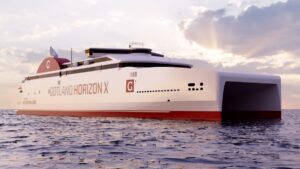A major international energy body has warned that efforts to blend hydrogen into mains gas supplies could be costly and impractical, and push up household energy costs for minimal emissions reduction.
The new report from the International Renewable Energy Agency (IRENA) warns that blending hydrogen in mains gas networks is a complicated way of cutting household emissions and would likely cost more than $US500 per tonne of emissions abated.
The findings suggest that the use of hydrogen in residential appliances like stove-tops and water heating would be prohibitively expensive, and electrification could serve as a cheaper path to cutting emissions.
While the exact abatement cost would depend both on the cost to produce hydrogen and the prevailing market price for fossil gas, even dramatic reductions in the cost of hydrogen would still likely see the effective abatement cost exceed $US200 per tonne.
“Blending leads to limited CO2 benefits and to a large increase in energy cost,” the IRENA report says.
“This translates into a very high cost of mitigating the GHG emissions of natural gas. Given the current production cost for renewable hydrogen, the cost may be above US$500/tCO2 for most gas prices.”
The findings suggest that hydrogen may never be able to play a major role in the decarbonisation of residential energy use, given technical limitations on the amount of hydrogen that can be blended in the mains gas supply and the comparatively higher costs.
Several Australian gas suppliers are currently trialling small volumes of hydrogen blending to demonstrate that existing gas infrastructure can be adapted for zero emissions energy supplies.
But critics of such trials have argued that hydrogen blending has minimal potential to cut emissions, and they are largely being undertaken as a way of delaying the phase out of fossil gas use altogether.
IRENA’s findings mirror the recent comments of ACT energy and emissions reduction minister Shane Rattenbury, who told the Smart Energy Expo this week that he saw no future where hydrogen would be piped to homes and businesses as a replacement for mains gas.
Rattenbury said that switching the supply of mains gas to hydrogen would require the replacement of virtually all gas appliances with ‘hydrogen ready’ alternatives, and it would be cheaper and easier to simply transition households onto electric devices.
Switching to electric appliances would be less complex and less costly while achieving the same emissions reduction benefits, Rattenbury said, because they could be powered by renewable electricity.
Rattenbury warned that gas companies faced the prospect of a demand ‘death spiral’ as rising costs of fossil gas pushed households onto cheaper alternatives.
“We do not see a future where we will be piping hydrogen or biogas to individual consumer households,” Rattenbury said. “We have clear advice that electrification is the most practical and cost-effective pathway.”
“Most people say around 10 per cent or so may be safely blended with fossil fuel gas in our network and still work with most of the existing gas appliances.
“Switching to 100 per cent hydrogen would likely require a complete replacement of gas appliances with hydrogen-ready appliances.”
“When people say to me ‘but we won’t have to pull out their gas cooktop and put an electric cooktop’, they don’t think about the fact that when they say, ‘let’s use hydrogen’, we have to do the same thing.”
The ACT government has committed to phasing out the use in the territory, and would likely avoid any attempts to try and replace existing fossil gas supplies with hydrogen.
In its report, IRENA analysis suggested the use of hydrogen in ammonia production and for heavy transport applications could provide for more cost-effective avenues for emissions reductions.
Additionally, ammonia would likely be the most cost effective medium for transporting hydrogen between countries – rather than as liquid hydrogen.









